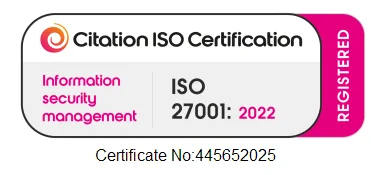Technology is crucial to how small and medium enterprises (SMEs) across the UK operate, yet across Milton Keynes and beyond, many business leaders find themselves reluctantly wearing an “IT manager” hat alongside their actual role, diverting valuable time and focus from core business activities.
Think of your technology infrastructure as the foundation of your office. Would you trust amateur construction work for your physical premises? Then why leave your digital infrastructure to chance?
This blog will explore the reasons why UK SMEs should consider outsourced IT support through the lens of a typical day in the life of someone who outsources IT compared to their day when they try to handle IT internally.
A Tale of Two Workdays
We’ll explore the difference outsourced IT could make from the perspective of an operations director at a manufacturing company in Milton Keynes – we’ll call him James.
James’ Day with In-House IT
7:30 AM:
James, the operations director at a fast-growing manufacturing company in Milton Keynes, arrives at the office early. He likes to give himself plenty of time to prepare for his day before everyone else gets in. However, instead of focusing on production targets or supply chain logistics, he’s wrestling with an IT issue that cropped up overnight. The server crashed, and now several systems are down. With no dedicated IT support team in place, James is left coordinating between his already stretched internal staff and a third-party IT consultant who can’t get there until mid-morning.
8:15 AM:
The first wave of staff begins to filter into the office and the emails start flooding in. Someone’s forgotten their password – again. Another team member is struggling with slow Wi-Fi. A production line terminal won’t connect to the network. James had planned to review a key supplier contract this morning, but instead, he’s troubleshooting IT issues with a mix of hopeful Google searches and frantic calls to their IT provider’s support desk.
9:30 AM:
Just as James finally sits down to get some actual work done, a Slack message pings: urgent. The finance director has spotted a suspicious email in the account’s inbox, requesting immediate payment of a high-value invoice. The sender looks legitimate, but something seems off. James stops what he’s doing to investigate. With cybercrime costing the UK economy an estimated £27bn annually, he knows that a single wrong move could cost the company thousands. With no in-house cyber security expertise, he calls in the IT consultant again – only to be told they now won’t be available until later that afternoon because of a setback elsewhere.
1:00 PM:
James rushes into a budget meeting, already behind schedule. The discussion quickly turns to IT costs. The finance team is concerned about escalating expenses – new hardware, licensing fees, and unexpected repair costs. James knows they need to modernise their systems, but he doesn’t have the time or expertise to develop a proper IT strategy.
2:30 PM:
His frustration reaches its peak as production grinds to a halt. A software update has caused compatibility issues with key machinery, leaving employees unable to do their work. Staff look to James for answers, but he’s still waiting on a callback from the IT consultant. Every minute of downtime is money lost, with research estimating that the average cost of downtime is around $9000 an hour (or £6928 in GBP). James can feel the pressure mounting.
4:00 PM:
The complaints start rolling in; employees are fed up with slow systems, recurring IT issues, and security concerns that never seem to be properly addressed. Morale is dropping, and James is questioning whether the attempt to save money by managing IT in-house is worth the stress.
5:45 PM:
James is still at his desk, responding to emails and following up on unresolved IT problems. His team has left for the day, and he should be heading home too, but there’s always just one more issue to deal with.
James’ Day with Outsourced IT
7:30 AM:
James walks into the office feeling refreshed. No early-morning crises, no firefighting IT issues. The overnight server issue? Already resolved. His trusted IT partner’s proactive monitoring identified the problem before it could disrupt operations, and their remote IT support team fixed it while James was still asleep.
9:00 AM:
James is focusing on the business priorities that actually drive growth. Instead of fielding IT support requests, his team logs any issues directly into their outsourced IT helpdesk, where expert technicians handle them in minutes. His phone is blissfully silent – no more “urgent” IT distractions derailing his day.
10:30 AM:
James receives an email from his IT support provider. It’s a proactive security briefing detailing new phishing threats targeting UK businesses like the one James works for. The best part? They’ve already implemented security patches and updated email filtering settings to block these attacks. Unlike before, James doesn’t have to worry about whether his business is protected, with everything already covered.
1:00 PM:
James heads into the budget meeting with a clear financial picture. Instead of scrambling to justify unpredictable IT expenses, he presents the cost savings from outsourcing IT. Their IT spending is predictable, based on a fixed monthly fee, and there are no more unexpected repair costs draining their budget.
2:30 PM:
Rather than dealing with unplanned downtime and dreading the oncoming fallout, everything at James’ company is running smoothly. Their outsourced IT partner’s regular maintenance and system updates ensure no sudden breakdowns. Employees are working efficiently, and production is on track.
4:00 PM:
James is in a strategy meeting, discussing the company’s future expansion. Their IT service provider has already provided recommendations on how their IT infrastructure can scale effortlessly as they grow, as part of their IT strategy services. This ensures the manufacturer’s systems can support increased demand without major overhauls.
5:15 PM:
James shuts down his laptop and heads home, on time. His IT headaches are a thing of the past, and he can finally enjoy an evening with his family without worrying about what IT crisis might be waiting for him tomorrow.
The Benefits Breakdown
James’ two workdays highlight a clear takeaway: outsourced IT support isn’t just about fixing problems; it’s about preventing them. Here’s how outsourced IT transforms operations for SMEs in Milton Keynes and across the UK:
1. Cost Savings – Predictable IT Expenses
In-house IT comes with unpredictable costs: emergency repairs, software upgrades, and downtime. Outsourcing offers fixed monthly fees, making budgeting easier. Proactive maintenance also prevents costly disruptions, which can cost UK businesses thousands of pounds.
2. Enhanced Cyber security – Better Protection
Cyber threats are evolving, and SMEs are a prime target. IT support provides:
- 24/7 threat monitoring
- Advanced phishing protection
- Regular security updates & compliance support
Instead of reacting to threats, businesses stay ahead with proactive security.
3. Access to Expert IT Support
Hiring an in-house IT team with specialist knowledge across networking, cyber security, and compliance is expensive. Outsourcing provides a team of experts with broad experience, but without the overhead.
4. Scalability – IT That Grows With You
As SMEs expand, their IT needs evolve. An IT service provider ensures seamless scaling, from new hires to AI-driven automation, without costly overhauls.
5. Business Focus – Less IT Distraction
With outsourced IT handling day-to-day tech issues, business leaders can focus on strategy and growth, not troubleshooting IT. No more wasted time or productivity loss.
Work with Confidence Knowing Your IT is Taken Care Of
This story highlights a reality many SMEs in Milton Keynes face – managing IT in-house is time-consuming, stressful, and expensive. But it doesn’t have to be. With outsourced IT support from Confidence IT, businesses gain cost savings, stronger cyber security, expert support, and scalable technology, all while freeing up valuable time to focus on growth.
Get in touch today to pick an IT partner with Confidence and take the weight off your shoulders.
Recent Blogs
Related posts
Is Your Provider Reactive or Proactive? How to Tell the Difference
Many businesses assume that their IT support is fine until something breaks. But there’s a big difference between a provider that reacts to issues and [...]
Proactive IT Support That Protects Your Business
When a business suffers a cyber incident (which 43% have), every minute matters. Systems go down, productivity stalls, and panic can quickly set in. That’s [...]
What Happens After Your Microsoft 365 Audit?
With an estimated 958,000 users per day worldwide, there’s a good chance Microsoft 365 is one of your most important tools – so it’s good [...]









